
Types of faults in photovoltaic modules -1-
- Posted by Neo Messtechnik
- On 4. October 2023
- 0 Comments
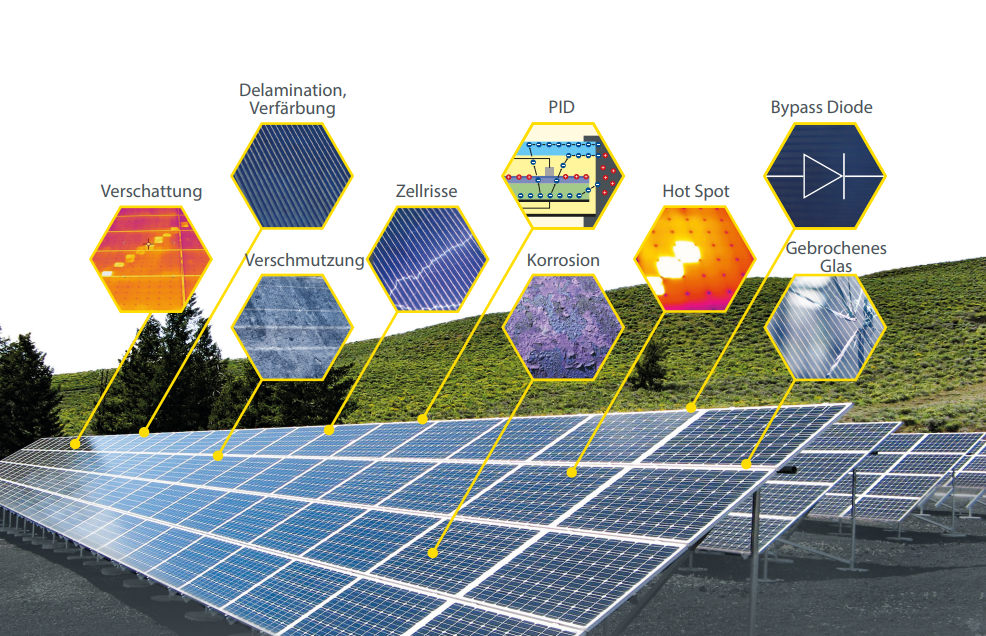
With the upcoming post series, we want to explain the different types of faults in photovoltaic modules in more detail. We also aim to illustrate the faults that can be detected using various measuring methods. If you have any further questions on the topics, we will be happy to provide you with personal information.
Table of Contents
Shading -1-
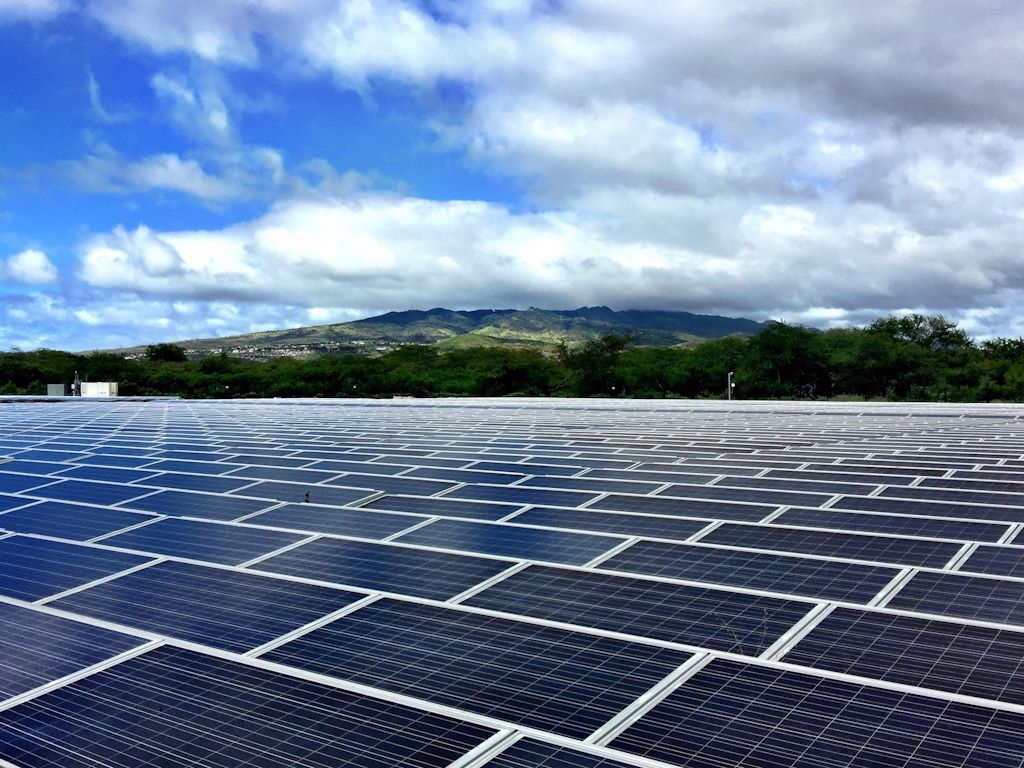
Why can shading be a problem?
The effects of shading on photovoltaic systems can bring significant reductions in performance. If even a small portion of a solar module is shaded, it can affect the overall performance of the system.
Even a minor 10% shading of a PV system can reduce the total output by 50% or more. This is because within solar modules that are shaded the current is not distributed evenly across all solar cells. The shaded cells draw current from the functioning cells. This loss of power manifests as heat. If the reverse voltage exceeds the breakdown voltage of the cell, the temperature of the cell increases and affects the surrounding cells. Therefore by-pass diodes are used to protect solar cells from breakdown.
Problems that shading brings:
As already mentioned, shading causes a loss of performance of the installation. However, a far greater problem of shading is the possibility of a hotspot. The hotspot will be explained again in more detail in the next newsletter. However, one should know that hotspots can cause fires in photovoltaic systems. This can be particularly dangerous with house roof systems. Basically, hotspots occur when certain cells are shaded for a long period of time.
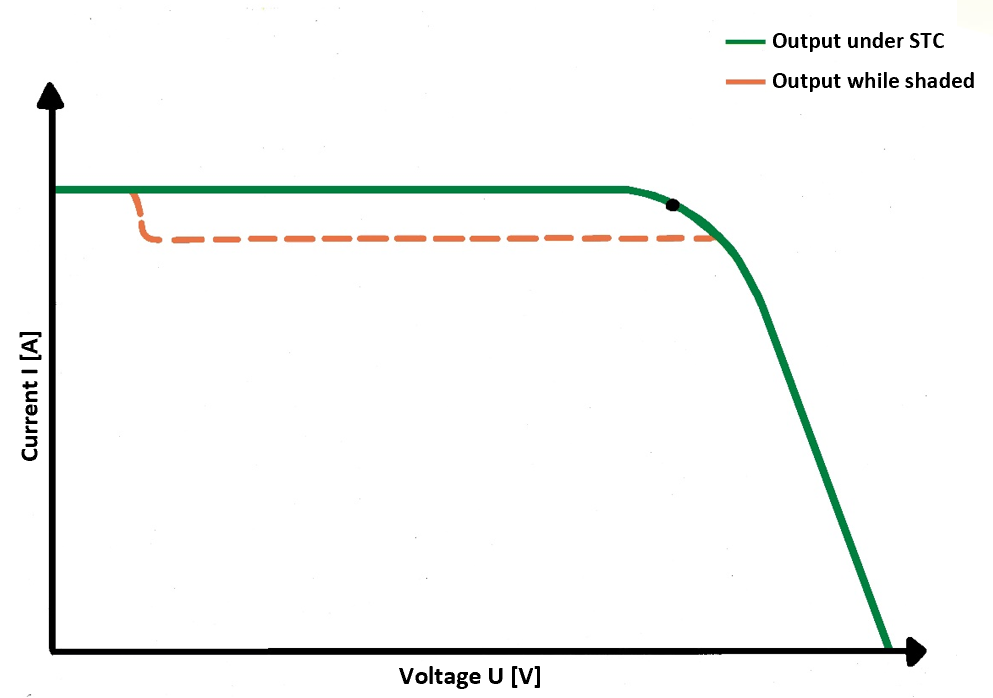
This image shows a possible variant of a shadowed string. Here we are dealing with large-area long-distance shading such as clouds. This characteristic curve changes depending on how dense and how wide the shading is. The green characteristic curve describes the ideal value of the string without shading. The area between the two curves describes the lost power.
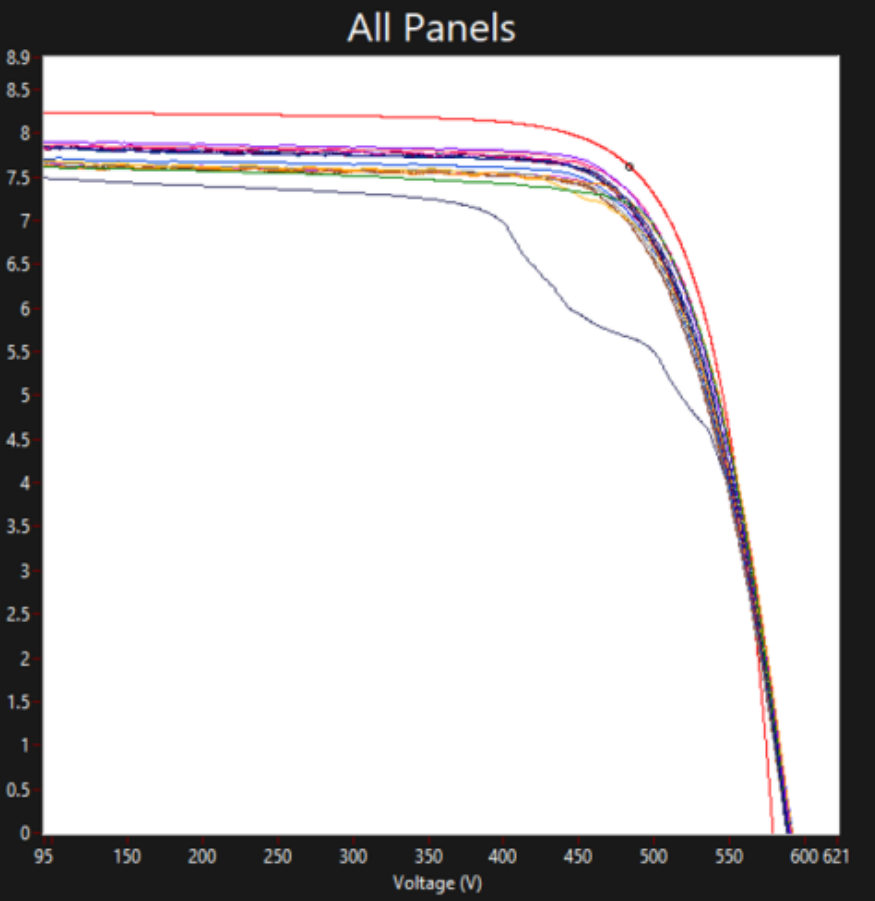
In this image, it’s evident that the depicted IV curve (in blue) only declines at elevated voltages, while the current experiences a more pronounced drop compared to the first picture. This is due to the nearby shading from vegetation, affecting specific modules within the string.
What can be done about shading at photovoltaic modules?
Often, shading cannot be avoided or can only be avoided with difficulty. However, there are ways to reduce the likelihood of shading or mitigate its effects.
Bypass diodes: Bypass diodes can “skip” shaded cell rows within a module in order to lose less power and protect the cells for overheating and hotspots. Fortunately, all modern photovoltaic modules come equipped with bypass diodes.
Site selection: While selecting a site for a photovoltaic system, it’s important to anticipate and consider potential shade sources like buildings or trees.. This proactive approach helps mitigate unnecessary shading.
Vegetation: Shading caused by trees and plants can be reduced through pruning or relocating them.
Power optimisers: Power optimisers allow to minimise the influence of shading on individual solar cells or modules because they regulate the current flow individually. At heavy shaded environment power gains of 2% to 5% are possible. Nevertheless, at non- or low-shaded conditions the optimizers also can decrease the system efficiency and the system costs are increasing. Consequently, Power optimisers and Micro-inverters are only recommended at locations with heavy shading.
PV Master 10 for photovoltaic inspection
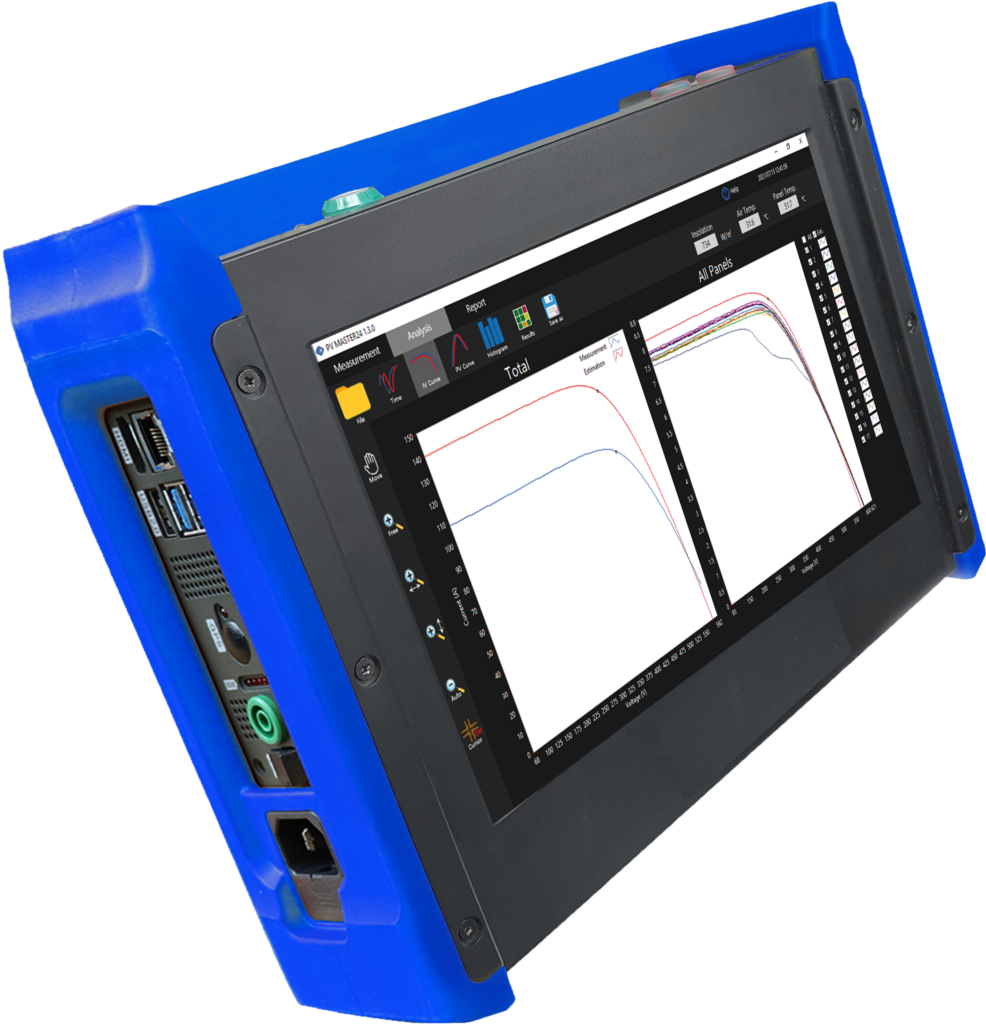
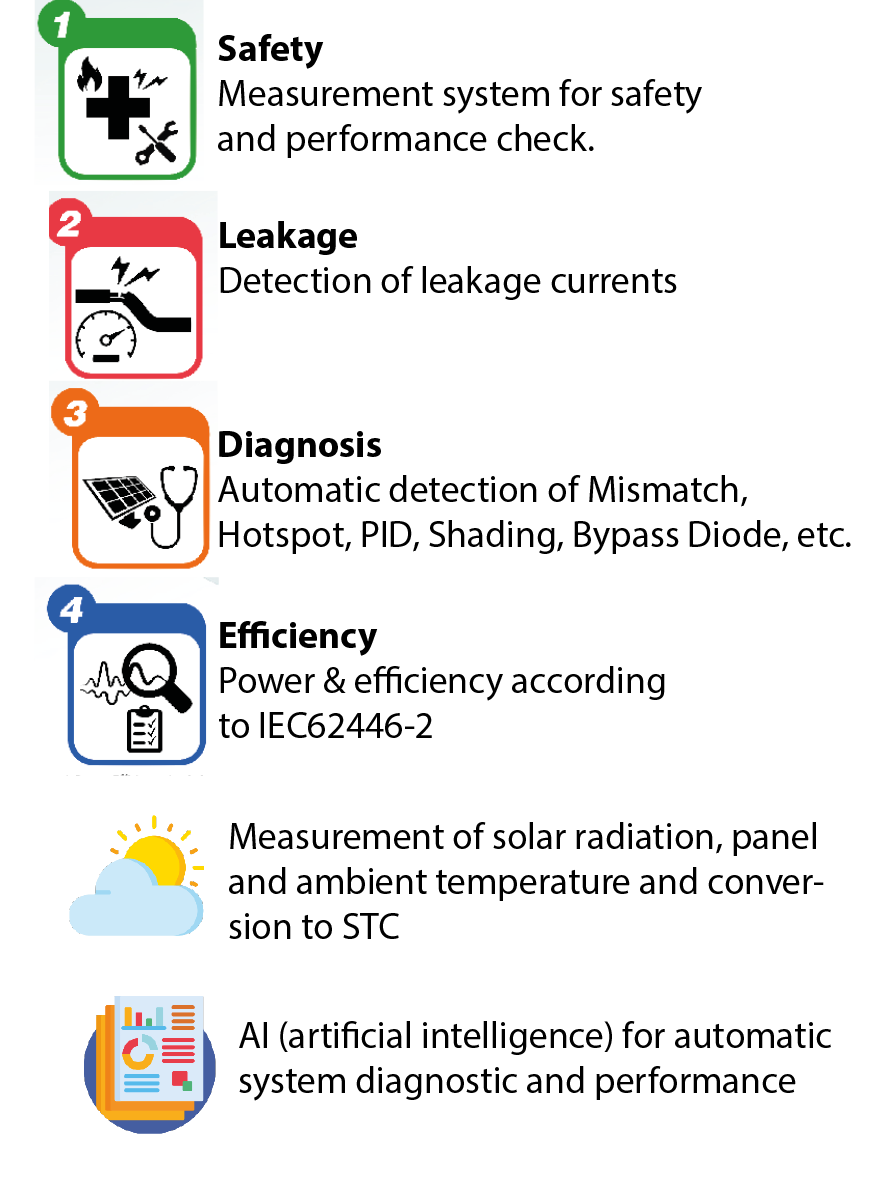
The PV Master 10 employs advanced Time-Sync Technology to measure up to 20 channels or strings simultaneously (1 channel intern / up to 20 channels with extension box). It offers precise potential measurement up to 1600V and IV-curve tracing capabilities at the same potential level. With a capacity of up to 30 A, it ensures accurate measurements. Additionally, there are two inputs available for thermocouples (Type K) and one for irradiance measurement via BNC. The device boasts a battery pack that ensures up to 4 hours of continuous operation, complemented by an 11-inch multi-touch full HD display for enhanced usability. Notably, it can detect serial and parallel mismatch losses, making it a comprehensive tool for efficient analysis in the field.
Wrapping up
Where can I get more information?



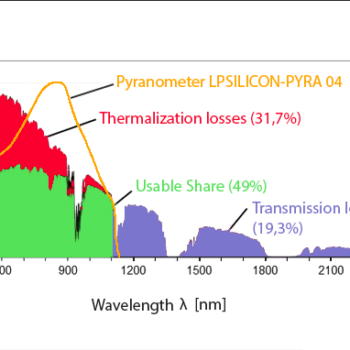
0 Comments